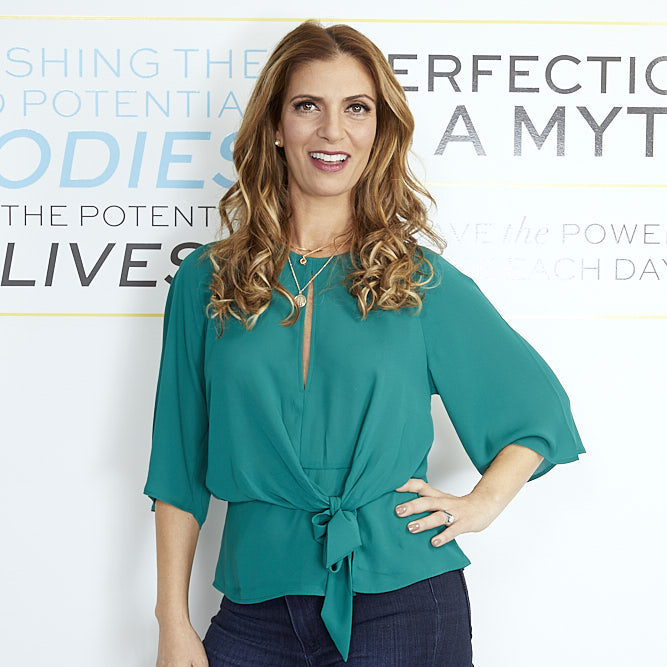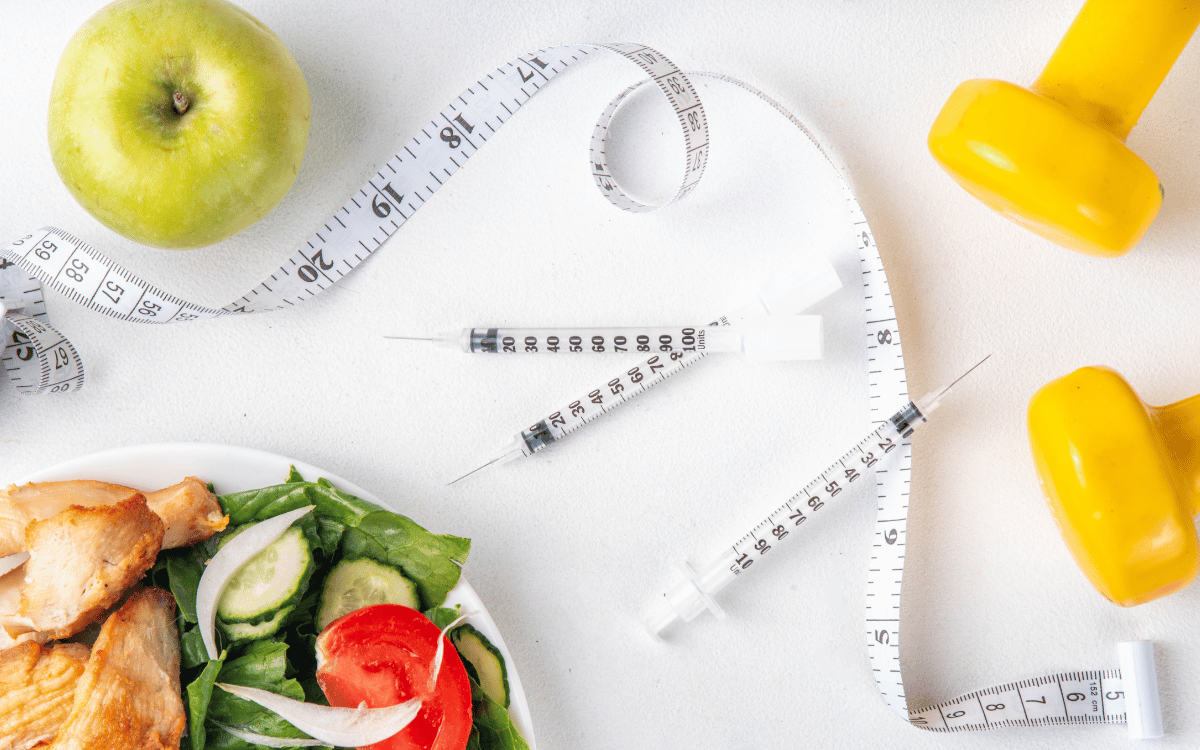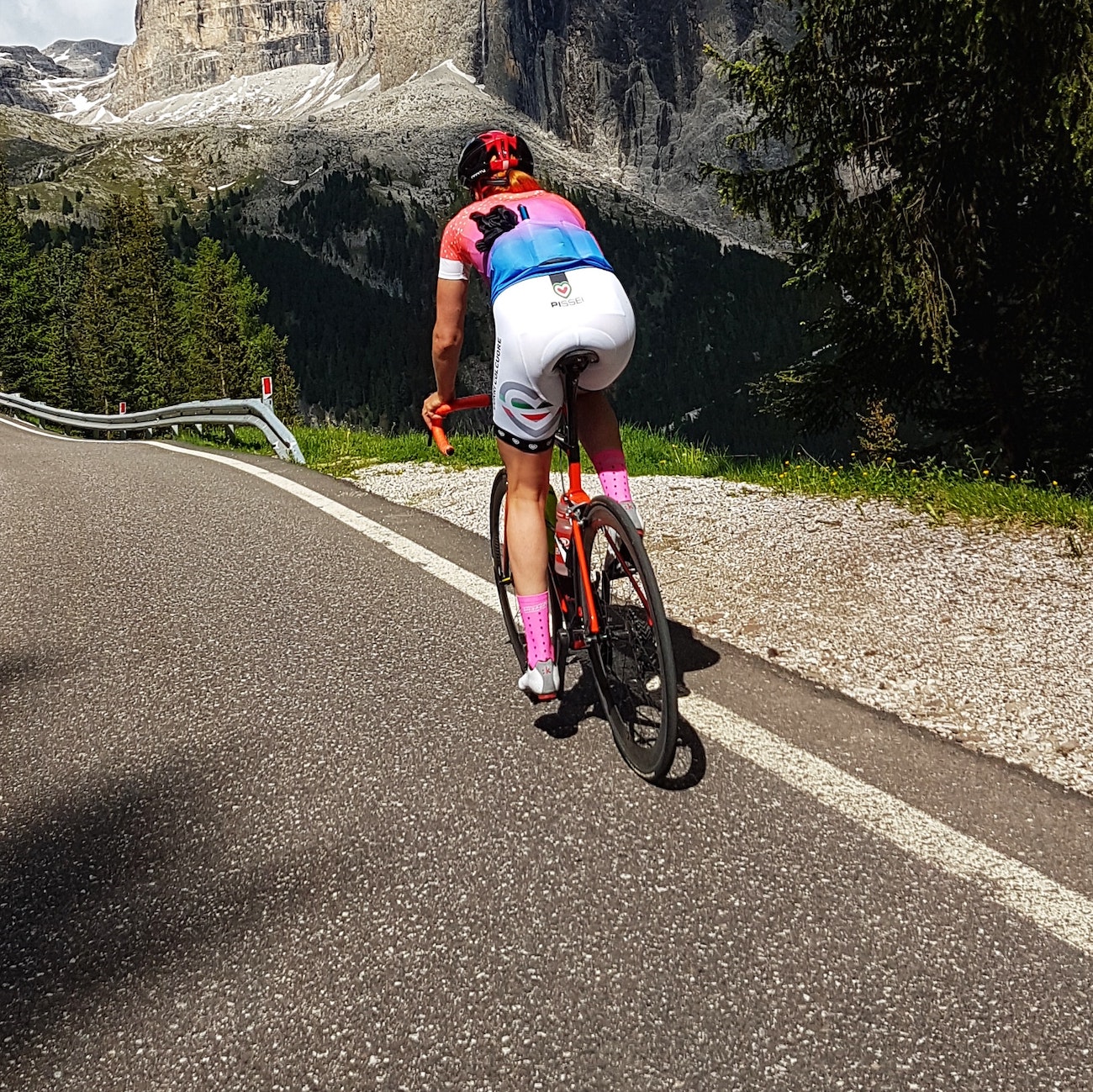There is no one way to measure your wellness results — it’s all about your individual goals and how YOU feel! If your goal is to look and feel more lean (we hear this from a lot of people in our community), then the key is building lean muscle mass. The first step is understanding body composition, what lean muscle mass is, and what might be holding you back from creating it.
We’re breaking down all the science-backed details below, plus sharing 3 secrets on how to see and feel transformative results!
What is body composition?
Your body composition tells you your body’s unique makeup. It is the percentage of muscle, bone, and fat in your body. These measurements are much more important than numbers on a scale because they impact how you look and feel, and they give you a clearer picture of your overall health. The goal is to have a healthy ratio of fat to muscle.
What is lean body mass?
Another important term to know is lean body mass, so let’s break it down. When we talk about lean body mass, we mean bones, ligaments, tendons, organs, water, and muscles — basically everything in your body that’s not fat. The weight of your organs and tendons do not really change, so changing your lean body mass really comes down to muscle. The more muscle you form, the more lean muscle mass you’ll build.
Why is lean muscle mass important?
It determines how you look
Two people with the exact same height and weight can look completely different because they have different body compositions. If your goal is to look lean, the key isn’t necessarily losing weight or blasting fat — the real secret is gaining muscle (aka lean muscle mass). You can diet or do cardio (more on that in a minute), but if you’re not targeting your muscles in an efficient, effective way, you will not see the kind of transformative results you’re looking for.
That’s why Physique 57’s approach isn’t about depriving yourself, running yourself into the ground, or taking anything away from your wellness routine — it’s about adding things that will help you build strength and confidence.
It impacts your metabolism
Your lean muscle mass determines your resting metabolic heart rate (RMR), or the number of calories your body burns at rest. That’s why increasing your lean muscle mass is the ONLY way to permanently boost your metabolism. Muscle tissue burns 15 times as many calories as fat, so the more muscle you have, the more calories you’ll burn throughout the day, even when you’re not exercising. Translation: Your metabolism will be revving as you sit at your desk, drive your car, run errands, and watch Netflix. How amazing is that?
It affects your heart health
Studies show that people who have more lean muscle mass have a lower risk of cardiovascular disease, diabetes, high blood pressure, and other health issues ¹.
How you can lose lean muscle mass
Now we know how important it is to build lean body mass, but it’s actually trickier to do than you might think. For many years, strength training was considered the number 1 way to create lean body mass. The drawback: lifting heavy weights (more than 10 pounds) can stress your joints and lead to injury over time. Plus, those same repetitive moves can get boring and lead you to a plateau. Fortunately, your Physique 57 trainers change up the choreography and sequences every class to maximize your results and keep you safe.
Another thing to consider: certain forms of exercise can actually decrease lean muscle mass. If you go all in on cardio — for example, your workout consists entirely of running or aerobics — your body will break down muscle tissue to generate fuel (carbohydrates) for all that cardio.
You can also lose lean muscle mass if you pair an intensive workout schedule with a super low-carb or no-carb diet. Old school diets made carbs seem like the enemy, but the truth is, our bodies NEED carbs! Without sufficient carbs to fuel your workouts, your body will break down muscle to get the fuel it needs. You’re essentially working against yourself! This is one reason people can be working out frequently but still not be seeing results.
How you can build lean muscle mass
Rock your Physique 57 workouts
The amazing news is that Physique 57 was designed specifically to build lean muscle mass. In fact, a study done by the Department of Exercise Physiology at Adelphi University showed that Physique 57 produced greater changes in lean muscle mass over a four-week period than aerobics, Pilates, yoga, and running.
The secret is Physique 57’s innovative Interval Overload Training method (you can read more about it here). It is a combination of high intensity interval training and muscle overload. With our interval training sets, your muscles are targeted and overloaded to the point of fatigue, then stretched for relief.
Numerous studies have shown that high intensity interval training (HIIT) is more effective at creating lean muscle mass and transforming body composition compared to lower intensity steady training ². Be sure to check out our Physique 57-style HIIT workouts On Demand. Get all the intensity your body needs, sans the impact.
Additionally, our interval training sets are designed to push muscles all the way to the point of overload — leaving them burning and shaking — which actually changes your muscles fibers to increase your strength and power. Translation: more lean muscle mass.
Make sure you’re joining us in class On Demand and in the studio to get all the benefits!
Refuel with protein
Protein is a powerhouse nutrient for forming lean muscle. When you eat protein, your body breaks it down into amino acids, which are used to repair muscle fibers post-workout and grow new muscle fibers. When you get enough protein in your diet, your body gets into an anabolic (a muscle building) state ³. Some of our favorite sources of protein are lean beef and chicken, fish, eggs, tofu, legumes, hemp seeds, chia seeds, chickpeas, navy beans, and quinoa. Check out more of our favorite foods to build long, lean muscle here.
Rest & recover
This is a major tip, so don’t sleep on it! Getting quality rest is essential for repairing and forming muscle. In fact, a study found that skimping on sleep decreases the activity of protein synthesis, which leads to muscle loss and inability to repair damage ⁴. When we sleep, our bodies release a hormone that helps our muscles grow. Plus, quality rest means you’ll have the energy to get after it at your next workout!
Sources:



